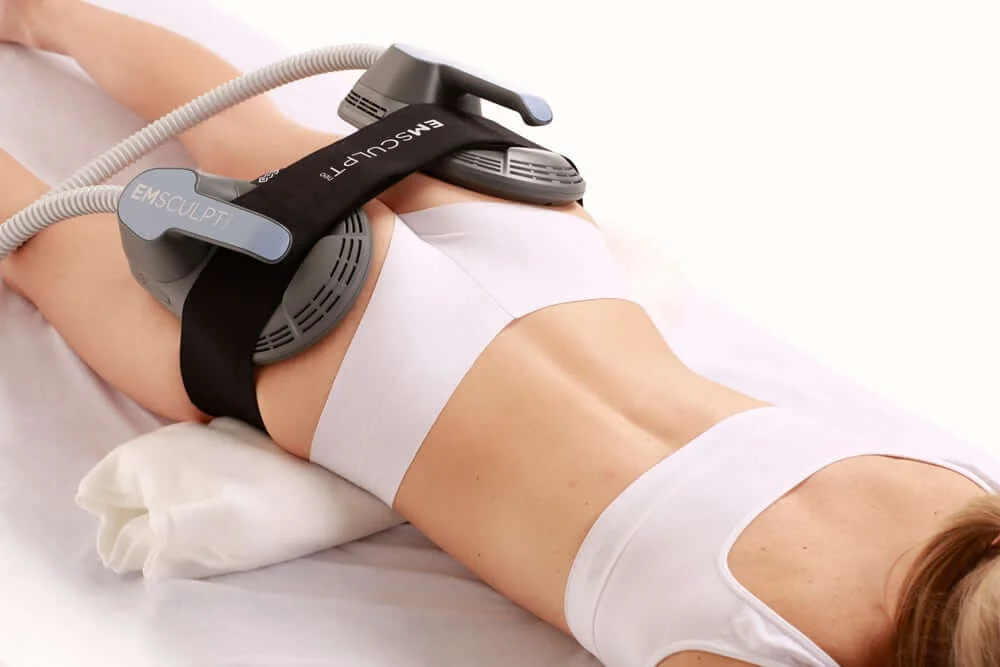- Porokeratosis is a rare skin disorder characterized by skin lesions with a thin center surrounded by a distinctive ridge-like border.
- Risk factors include genetic inheritance, exposure to ultraviolet light, and immunosuppression.
- Five main types differ in appearance, location, and age of onset.
- Single or combination topical, oral, or surgical therapies are beneficial but not curative.
The name porokeratosis, meaning scaly pore, was originally given to areas of abnormal skin tissue, or lesions, thought to develop from the pores of sweat glands.
We know now that porokeratosis was misnamed—it has no relation to pores. It’s a rare skin disorder that affects the maturation of skin cells, producing lesions with distinctive raised borders.
Here we will describe the different types of porokeratosis, as well as their treatment, complications, and prevention. But let’s begin by explaining how this condition really develops and the factors that contribute to it.
What is Porokeratosis?
As skin cells mature, they harden by accumulating a protein called keratin, a process called keratinization.
Porokeratosis is a disorder of this process, resulting in the development of anywhere from a few to numerous skin lesions. They can be identified by their thin center surrounded by a distinctive ridge-like border made of protein-keratin, called the cornoid lamella.
Porokeratosis is classified as a rare disease, according to the Genetic and Rare Diseases Information Center of the National Institutes of Health. This means that each type affects fewer than 200,000 people in the United States.
What Causes Porokeratosis?
Sometimes people develop porokeratosis after skin trauma (e.g., burn wounds) or infections. You’re also more vulnerable to developing it if you have fair skin.
Although researchers still don’t fully understand porokeratosis’ underlying causes, they have identified the main risk factors contributing to its development.
- Genetic inheritance: All types can occur in family members, but sporadic genetic defects also occur (no family history).
- Exposure to ultraviolet (UV) light: Porokeratosis is associated with a history of intense or long-term exposure to UV light.
- Weakened immune system: New or worsening lesions can develop with immunosuppression caused by therapy (e.g., chemotherapy, radiation therapy, organ transplant medications) or disease (e.g., AIDS, cancer, chronic renal failure, Crohn’s, diabetes, liver disease).
How Is Porokeratosis Diagnosed?
Porokeratosis is usually diagnosed by its appearance. According to East Greenwich, RI, dermatologist Caroline Chang, the characteristic rims surrounding the lesions are “well visualized with the assistance of a dermatoscope (polarized skin magnifier).”
Your doctor may also take a sample of the affected area to do a skin biopsy if necessary.
There are five main types of porokeratosis. All types are rare, although the first two occur more frequently. You can develop more than one at once, or a second type after the first.
1. Disseminated Superficial Actinic Porokeratosis (DSAP)
DSAP causes a few to numerous individual lesions or patches, which can be skin-colored, brownish red, or brown. These patches can grow to half an inch in diameter, with a center surrounded by a raised brown ring.
Sun-exposed areas are most commonly affected, especially the arms or legs, but lesions can also appear on the forehead and cheeks in a small percentage of people. For those with a rare non-actinic variant, lesions can develop anywhere but spare the palms and soles. There are usually no other symptoms, aside from itching or stinging.
The condition generally occurs in adults in their 30s or 40s. It affects women twice as often as men.
Contributing factors:
- Genetic inheritance, especially if it occurs in female relatives
- Immune suppression or extensive exposure to UV light
- Lesions often appear in the summer and improve in the winter, although non-actinic forms are less likely to worsen with sun exposure
The risk of cancer is usually benign — squamous cell carcinoma occasionally develops, but this occurs in less than 10% of people with DSAP.
2. Classic Porokeratosis of Mibelli (PM)
Initially, PM causes small brownish lesions. These remain unchanged or slowly grow over the years into larger plaques with a hairless center surrounded by a rim. Less commonly, adult-onset lesions grow rapidly into “giant porokeratosis” lesions of up to 8 inches in diameter.
Lesions typically appear on the limbs, but can be anywhere, including the hands, feet, neck, shoulders, face, genitals, and mucous membranes. There are usually no other symptoms, although the lesions may itch.
PM typically emerges during childhood or young adulthood. In some cases lesions can be present at birth. Males are affected twice as often as females.
Contributing factors in adults include immune suppression and UV exposure. PM is also occasionally associated with trauma (e.g., burn wounds).
Squamous or basal cell carcinomas can develop, but this is more likely in older adults.
3. Linear Porokeratosis (LP)
LP is characterized by papules and plaques bordered by a ring, with streaks of reddish-brown patches.
Numerous grouped patches usually appear in lines along the arms or legs, or on one side of the trunk, head, or neck. These patches, which can itch or cause pain, may occur in one area (localized) or multiple areas (generalized).
LP most often emerges in infancy or early childhood, but sometimes occurs later in adulthood. It is equally frequent in males and females. Patients with a family history of LP or DSAP are more likely to be affected.
There is a higher risk of developing basal or squamous cell skin cancer than in all other types, although this is more likely in older adults.
4. Porokeratosis Palmaris Et Plantaris Disseminata (PPPD)
PPPD causes numerous small, relatively uniform lesions in the palms and soles, but the condition may spread to other areas, including the mucous membranes. There are usually no other symptoms, although the affected areas may feel itchy and tender.
PPPD can emerge at any age from birth to adulthood. Males are affected twice as often as females.
5. Punctate Porokeratosis
Numerous tiny bumps with thin raised margins generally appear on the palms and soles, in some cases causing itchiness or discomfort. The condition may slowly spread to other areas.
Punctate pokokeratosis commonly manifests itself in late childhood or early adulthood, and may be accompanied by other types of porokeratosis. Frequency by sex is unknown.
What Are the Complications of Porokeratosis?
Most lesions are benign. On rare occasions (about 7.5% of patients), basal or squamous cell carcinoma — types of skin cancer — may develop. The greatest risk of developing a malignancy occurs in lesions that are large, have existed for a long time, or are linear.
But, as Dr. Rhonda Klein of the Connecticut Dermatology Group emphasizes, with DSAP, the “risk of progression to malignancy with porokeratosis is incredibly small.”
How Is Porokeratosis Treated?
For many people, all that is required is sun protection, moisturizers, and observation for malignancy.
If you’re concerned about the appearance of your lesions, or if you experience dryness, itching, or pain, you may wish to explore treatment options with your dermatologist.
Various therapies can be helpful, especially for individual small lesions. Unfortunately, as Dr. Chang notes, “they usually recur after treatment is completed.”
Although there is no permanent cure, according to Dr. Klein, “a combination of oral treatments such as imiquimod, fluorouracil, and retinoids can be beneficial. In some cases, excision, cryotherapy, or fractional laser resurfacing may also be recommended.”
Topical Therapy
- 5-Fluorouracil: May be effective for all types, but lesions may recur.
- Vitamin D3 analog (e.g., calcipotriene, tacalcitol): May be effective for DSAP.
- Retinoids (tretinoin, tazarotene): May reduce appearance of rims; may improve absorption of other topical therapies.
- Diclofenac gel: May be effective for DSAP.
- Imiquimod: May be effective for PM.
- Calcineurin inhibitors (tacrolimus): May be effective for LP.
Oral Therapy
- Retinoids (isotretinoin, acitretin): Isotretinoin may be effective for DSAP and PPPD when combined with topical 5-fluorouracil; acitretin may be effective for LP.
Surgical and Other Therapies
- Excision: Essential with suspicion of malignancy; not useful for multiple lesions.
- Cryotherapy (cold therapy): Has been effective for DSAP and PPPD; possibly used for small superficial basal and squamous cells.
- Electrodessication and curettage (scrape and burn): Can be used to treat small lesions or if cryosurgery ineffective.
- Laser therapy: Various types have been effective for DSAP, PM, and LP.
- Photodynamic therapy: Has been effective for DSAP and LP; can be used for multiple lesions on a larger surface area; possibly used for small superficial basal and squamous cells.
What Can I Do to Prevent Porokeratosis?
Dr. Chang encourages sun avoidance for all skin disorders, but notes in particular that “those with DSAP should practice sun avoidance/protection to prevent progression of the disease.”
You cannot change your genetic inheritance, but you can take steps to prevent the development or recurrence of porokeratosis and reduce your risk of skin cancer. The American Academy of Dermatology offers these tips to protect your skin from UV light:
- Seek shade, especially between 10 am and 2 pm.
- Wear protective clothing and a wide-brimmed hat and sunglasses.
- Generously apply a broad-spectrum, water-resistant sunscreen with a sun protection factor (SPF) of 30 or higher on all exposed skin, even on cloudy days. Reapply every 2 hours, or after swimming or sweating.
- Avoid artificial tanning beds.
- Perform regular skin self-exams.
If you notice a change in a porokeratosis lesion, ask your doctor for a prompt evaluation.









